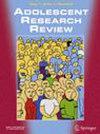A Systematic Review of the Facilitators and Barriers to Help-Seeking for Self-Harm in Young People: A Systems Thinking Perspective
Abstract
Young people who self-harm require support and resources to address their self-harm. However, they are often reluctant to seek help for their self-harm. Despite efforts to increase help-seeking, the rates of self-harm in this population continue to increase. A better understanding of the factors that influence help-seeking for self-harm in young people is necessary. This systematic review aimed to synthesize the existing literature on the known facilitators and barriers to help-seeking for self-harm in young people. Across the 33 studies included in this review, the age range of young people was 11 to 30 years. Facilitators and barriers to help-seeking for self-harm were extracted and mapped onto a systems thinking framework. The synthesis indicated that there were 17 known facilitators and twice as many barriers across the help-seeking system hierarchy. Most of these facilitators and barriers were related to lower levels of the system (i.e., service delivery and the social environment, and young people who self-harm). There was limited consideration of broader systemic factors that influence help-seeking for self-harm and the interactions between these facilitators and barriers in influencing help-seeking. Future research should consider the use of systems thinking frameworks and methods in understanding and addressing this complex problem.

 求助内容:
求助内容: 应助结果提醒方式:
应助结果提醒方式:


